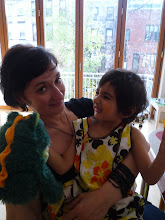Photographer: Steve Azzara, model: Kess M,fashion designer: Berít New York,
goggles: Brute Force Leather, ring: Rocklove Jewelry
Lace up your corset and grab your aviator goggles, Steampunk II is landing at the Brooklyn Indie Market on Saturday October 24th! (Don't miss the after event party at the The Way Station, Brooklyn's first steampunk bar.)
Raven Dress (c) Morrigan NYC, photographer: Stella Belikiewicz
Steampunk has been around as retro futuristic sci-fi for years but has been receiving a lot of media attention of late due to the emergence of indie designers who are bringing these virtual worlds into the here and now. The New York Times Magazine devoted an extensive article to the movement last spring and mainstream designers such as Alexander McQueen and Ralph Lauren are putting out neo-Victorian/Edwardian fashion lines.
Interesting Particulars: Sacred Science Lamp
Steampunk style combines Victorian elegance with mechanical parts of the same era (think fine tailoring plus grommets), adds a shot of Jules Verne then throws the lot into a 21st century blender. The emphasis is on traditional craftsmanship and formal wear with a sexy DIY attitude. Nothing here is generic or casual.
Interesting Particulars: Asymmetrical Shadow Scroll Necklace
Among local designers present at the market, Berit New York is of particular interest as one of the most prominent steampunk-themed designers, often with a swashbuckling flair. Also noteworthy are Morrigan NYC's gorgeous victoriana, gothic and Lolita inspired designs and Interesting Particulars' sacred science lamps and biomorphic felt adornments.










